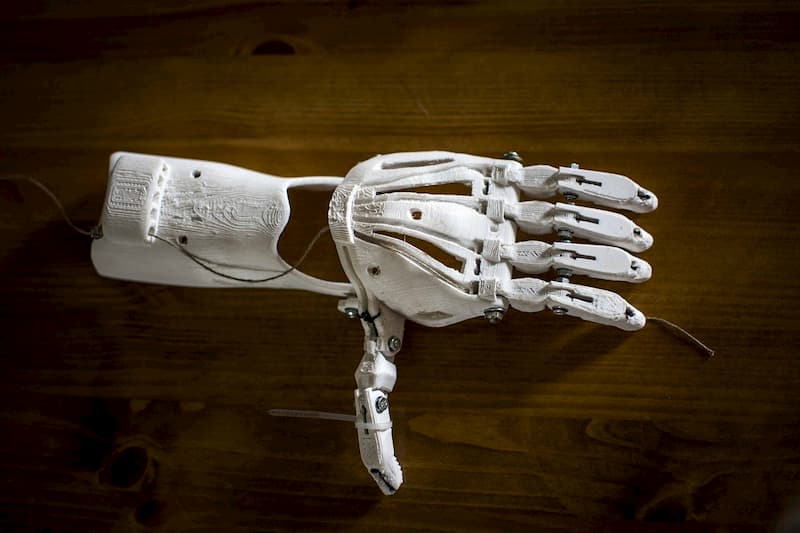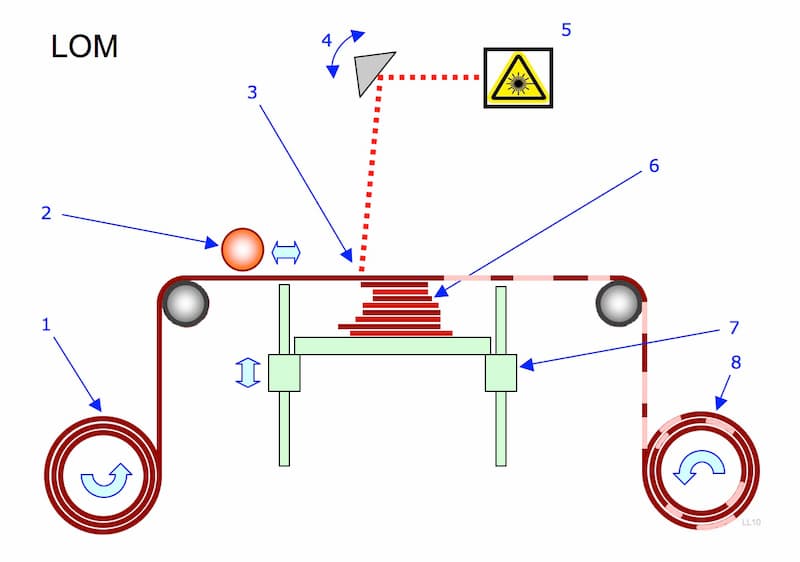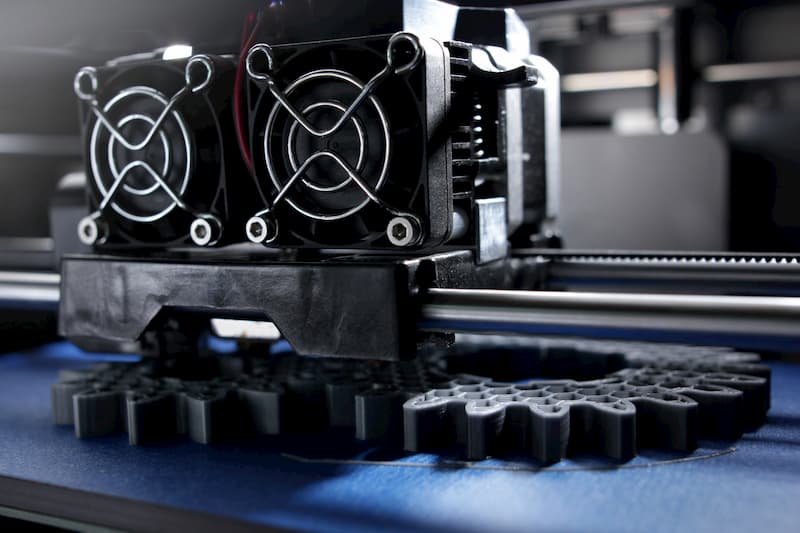Prototyping is an essential part of the product development process. Traditionally, it has meant long lead times and high costs or creating makeshift parts on the spot with little accuracy and a faint resemblance to the actual product.
Enter rapid prototyping.
What Is Rapid Prototyping?
And what is the difference between rapid prototyping and “just” prototyping?
Even the name itself says that rapid prototyping is a quick way to produce parts. And the speed is also the main difference between regular and rapid prototyping.
But it tells nothing about the reasons behind the boost in manufacturing speed.

Manufacturing plastic prototypes used to have the highest requirements for up-front investments. Creating a mould for injection moulding and actually producing something that functions, behaves and looks similar to the final product needed a lot of money.
Adding “rapid” into the mix needed a push in technological developments. Additive manufacturing in the form of 3D printing services has dramatically diminished the time and money necessary for producing a small batch of products or even a single part for an assembly.
Technologically, rapid prototyping for metal parts is also available through 3D printing. Still, the machinery with such capabilities is hard to find and the costs are considerably higher compared to CNC machining.

People also talk about CNC machining in the context of rapid prototyping. This refers to a few capabilities. For some time already, CAD/CAM software has been able to translate digital models into G code necessary for manufacturing. This development had a huge effect on costs and time requirements.
Also, more service providers are now offering CNC machining services online with instant quoting for CAD models. This further decreases the barrier between the initial concept and the first test piece by removing most of the administrative actions and costs related to ordering.
The same applies to sheet metal, as 3D models can be quoted for cutting and bending in a matter of seconds.
While there is no difference in terms of the metal fabrication methods themselves, the process as a whole has been made sleeker and faster for both prototyping but also serial production.
Advantages of Rapid Prototyping
The whole purpose of innovation in industrial technology is maximising revenue through more effective ways of manufacturing. There are a few different perks rapid prototyping brings to the table to lower costs, and enhance speed and time-to-market.
Quickness
Need the parts in under a week? No problem.
Small 3D-printed parts can easily be created in a few hours. Here, the new process has significantly reduced the time spent on actual manufacturing.
In the case of CNC machining and laser cutting, the level of automation has had a great effect on overall speed and costs. The ability to process CAD files for automated pricing, machine setups and creating cutting programs is the driving force behind that change.
So whichever service you are going for, expecting the parts in less than a week is reasonable. This can definitely speed up the whole product-to-market cycle.
Price
The availability of these services online means that you do not have to spend time producing the parts yourself while also minimising the activities related to outsourcing production.
In the case of 3D printing, it is even viable to purchase a printer for in-house use because of the simultaneous advancements in technology and drop in machinery costs.
The automated nature of the whole manufacturing process also lowers the adjacent costs related to operating the machinery.
Communication of Ideas
To be fair, CAD software itself already took a great leap forward from engineering drawings. You can change the part design with a few clicks, rotate it, find assembly interferences and move the assembly as you like. But it is not the same as real life..
Touching and playing around with a product still in the concept phase can clearly bring forth the shortcomings and spark some more inspiration. Also, others will be able to see your vision in action.
Sometimes, such visualisation may also be a deal-maker when pitching a solution to a customer or an investor.
Testing
That’s the main purpose of producing rapid prototypes. You can test out a wide range of solutions in a short time-span to boost your product development towards a finished product that is actually reliable.
The testing applies to both design and functionality. The former allows better comprehension of dimensions in reality. The latter makes it possible to test out parts in real-life conditions.
Testing out different materials for the same geometry will help you make the most cost-effective decision for serial production.
When making products, you don’t want to rush into setting up the whole production before eliminating all the shortcomings.
Complex Parts
We will get to the technology shortly. But it is important to consider that most of the production methods revolve around 3D printing and CNC machining. Although we are talking about prototyping, these same methods can later be used for full-scale manufacturing.
One of the great perks here is the flexibility of these production technologies. They are able to create very intricate parts, including ones that stem the features from generative design methods. This advanced CAD feature lets engineers optimise the parts for material use and cost, which may come in especially handy in industries like automotive and aerospace.
- Personal account manager
- Quality assurance
- Payment terms for companies
- On-time delivery by Fractory
Rapid Prototyping Technology
We’ll start by pinpointing all the different additive manufacturing methods and then continue with more traditional ones like CNC machining and laser cutting, showing exactly how they can be used for rapid prototyping.
Stereolithography (SLA)
ARVE error: url: https://www.googleapis.com/youtube/v3/videos?part=snippet%2Cstatistics&id=smxwtA5afc8&key=AIzaSyAQ7WFzTAUrOX-FjsIrFS3JwZBFzgIvloc Status code 200 expected but was 403.
A form of 3D printing technology that manufactures parts layer by layer using photochemical reactions.
Stereolithography, or resin printing, uses an ultraviolet laser that focuses on a vat of photopolymer resin. The 3D printers derive all the information from the CAD design, creating routes for the laser. Upon contact, the resin solidifies to form a layer of the rapid prototype.
Then, the part is submerged into resin again and the printing of another layer starts. After the process is complete, the parts must be cleaned from all the wet resin. Also, the cutting off of supportive structures for overhanging elements is necessary.
Digital Light Processing (DLP)
ARVE error: url: https://www.googleapis.com/youtube/v3/videos?part=snippet%2Cstatistics&id=qZiAu3PouK8&key=AIzaSyAQ7WFzTAUrOX-FjsIrFS3JwZBFzgIvloc Status code 200 expected but was 403.
Similarly to stereolithography (SLA), digital light processing is a 3D printing method that utilises a photopolymer resin which solidifies under a light source.
The most significant difference comes in speed. DLP lasers cure a whole layer at a time while SLA does so point by point. At the same time, curved surfaces may have a rougher texture and quality compared to SLA.
Selective Laser Sintering (SLS)
ARVE error: url: https://www.googleapis.com/youtube/v3/videos?part=snippet%2Cstatistics&id=1QZ8irX5xcE&key=AIzaSyAQ7WFzTAUrOX-FjsIrFS3JwZBFzgIvloc Status code 200 expected but was 403.
Also an additive manufacturing technology, selective laser sintering uses material powder and a high power laser to create the final part.
The laser beam heats the material to fuse the particles of plastic, glass, ceramic, etc. into a solid object with the desired shape. It also works on a layer-by-layer basis. After printing a layer, more material (about 0.1 mm) is added to form the next layer.
The SLS machine uses a pulsed laser because the density of the part depends on peak power output. The mass of powder is always in a heated state just below the fusing point.
One of the perks of using laser sintering is that there is no necessity for extra support. The part is always surrounded by loose material particles which secure the position and shape.
Selective Laser Melting (SLM)
ARVE error: url: https://www.googleapis.com/youtube/v3/videos?part=snippet%2Cstatistics&id=qzhLijYn4Ng&key=AIzaSyAQ7WFzTAUrOX-FjsIrFS3JwZBFzgIvloc Status code 200 expected but was 403.
In essence, very similar to selective laser sintering (SLS). The main difference is in the materials – SLM or direct metal laser sintering (DMLS) is suitable for metals.
Also, SLS does not need as high temperature for fusing the materials, whereas SLM actually needs the metal to melt to form stable bonds and a homogenous part.
Fused Deposition Modelling (FDM)
ARVE error: url: https://www.googleapis.com/youtube/v3/videos?part=snippet%2Cstatistics&id=GxLjDNrQBgs&key=AIzaSyAQ7WFzTAUrOX-FjsIrFS3JwZBFzgIvloc Status code 200 expected but was 403.
Also known as fused filament fabrication, this is the most common form of 3D printing. The majority of hobbyists looking to produce their prototyping design concepts use this type of rapid prototyper machines.
It uses a continuous thermoplastic filament to create the parts. During the process, the filament is heated at the nozzle or extruder head.
CNC-controlled motors move the head during printing according to the input. The surface finish of the parts is not as good as with many of the other processes, but the popularity of the method stems from its affordability.
3D printed objects created by fused deposition modelling may also require support structures in the case of a more complex design with overarching features. These are usually removed during post-processing.
Laminated Object Manufacturing

Laminated object manufacturing, or LOM for short, uses thermoplastic adhesives when stacking layers of sheet material on top of each other.
The sheet material has to reach certain temperatures first to activate the adhesive on top of the last layer. For that reason, a heated roller is placed just before the stack that ends up as the rapid proto part.
As soon as the new layer is in place, a laser beam cuts it into shape.
Binder Jet 3D Printing
ARVE error: url: https://www.googleapis.com/youtube/v3/videos?part=snippet%2Cstatistics&id=97doBH9jSXY&key=AIzaSyAQ7WFzTAUrOX-FjsIrFS3JwZBFzgIvloc Status code 200 expected but was 403.
Another rapid prototyping and additive manufacturing technology.
Here, an inkjet print head deposits liquid binding material onto the last layer of the part. After it’s done, a new layer is formed by spreading powder material onto the binding liquid. As it solidifies, it forms another layer.
The biggest problem with this kind of rapid prototyping technology is wasting of the powder material. While some of the excess material can be reused, there are limitations to the number of times it can be done.
Also, some of the excess material has to be thrown away right after the first manufacturing cycle is complete.
Online CNC Machining
Now we come to the more traditional manufacturing methods. CNC machining is well suited for prototyping parts from a variety of different materials, from metals to plastics.
Online services allow users to upload CAD files onto the platform for an instant price. These services are still a little inaccurate relative to market prices but can save a considerable amount of time through faster processing times.
This makes online CNC machining especially enticing for one-off prototyping and we will surely see it become more accurate over time, allowing price accuracy with large-batch orders.
Online Sheet Metal Fabrication
Sheet metal fabrication has also moved online by now. While CNC machining may need a lot of setups over the course of producing a single part, laser cutting and bending a uniform-thickness sheet is a little less complicated.
Online service providers often feed large datasets from manufacturing partners to the algorithms to arrive at reasonable market prices.
Sheet metal prototyping is a great way to aid the product development process by building the design as intended. This means you can make the parts with complex cutouts from the chosen material (e.g. S355 instead of a cardboard substitute) to also test the parts for the structural qualities in an assembly.
Functionality of Prototypes
Rapid prototyping offers a wide range of methods to bring your design ideas to life. 3D printers are the fastest way to get a tangible result. At the same time, the choice of method depends largely on the purpose of prototyping in your product development process.
All the 3D printing methods come with different levels of quality. But a nice result is obtainable through some post-processing.
For non-structural parts, plastic is probably more than good enough to prove the functionality and/or design features in the case of a pair of glasses, for example. Structural parts need to be able to bear loads. And this is where substituting metal for another material is not reasonable.
Although 3D printing is also available for metal, it is still hard to find a service at a viable cost because today, the machines with such capabilities are few and far between.
Until the price point lowers, the most convenient way to test out some ideas for metal parts in the product development process is by using CNC machining and other metal fabrication services online.
FAQ
What is rapid prototyping?
It is a way of producing parts quickly by utilising the latest in technology – CAD/CAM manufacturing, new manufacturing methods, online services that diminish ordering times, etc.
What is additive manufacturing?
Most rapid prototyping technologies use methods whereby material is added to create the final part. The opposite of this is subtractive manufacturing, like CNC machining, where final dimensions are obtained through material removal from an initial block.
Is rapid prototyping the same as 3D printing?
Making rapid prototypes is only one way of using 3D printing. Rapid prototyping also involves other methods, so they are definitely not synonymous.
How to incorporate rapid prototyping ideas during the design phase?
If possible, the test product can be simplified for cost-effective production. For example, a test product may replace tapped holes with regular holes as it is easier to produce but does not, in some cases, affect the functionality of the part.









